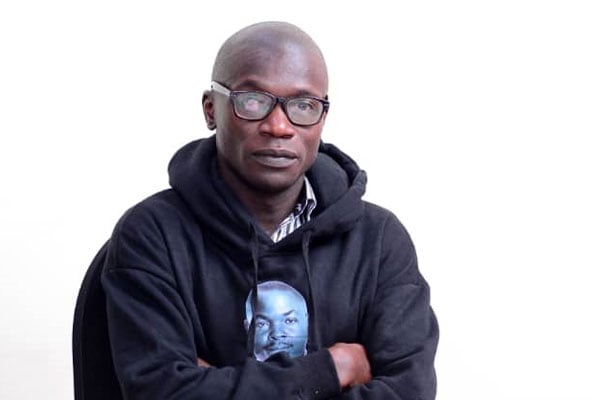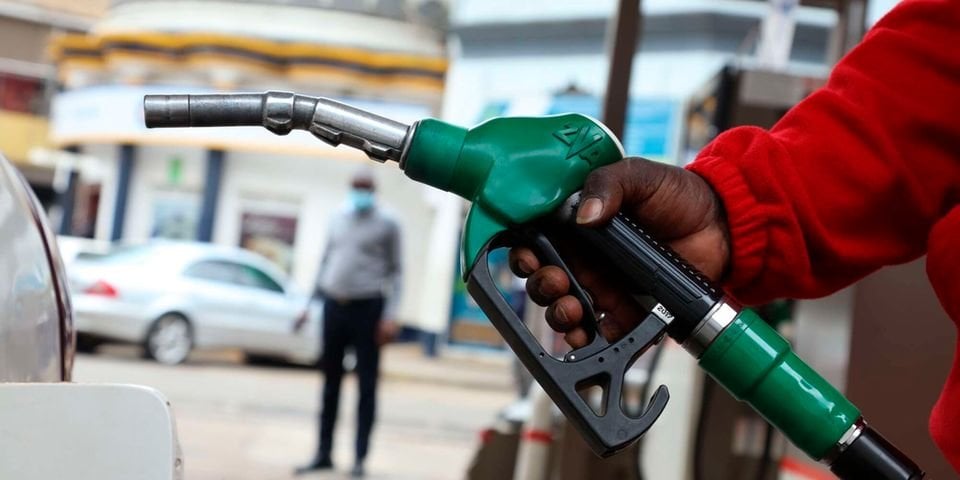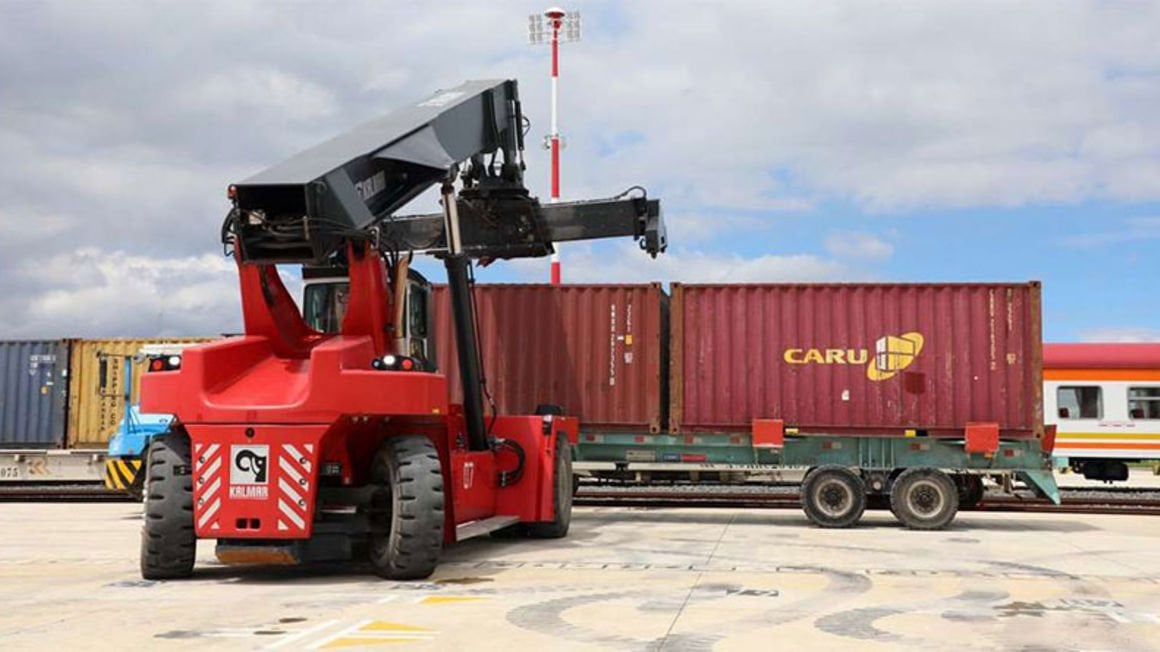Prime
Fears grow in the hinterland over Ruto agenda

Cargo trucks arrive at the Busia border point from Kenya on August 22. By the end of 2021, statistics from the Kenya Ports Authority (KPA) indicated that Uganda (76.7 percent) accounted for the vast bulk of transit cargo through Mombasa. PHOTO/MICHAEL KAKUMIRIZI
What you need to know:
- New faces come with new ideas, the old adage goes. In Kenya, the new leadership is already instituting changes that could look primed to impact the way trade is done in the region, Derrick Kiyonga writes.
Mr William Ruto may have been deputy president for the 10 years Mr Uhuru Kenyatta has been steering the wheel in Nairobi, but he has reversed a number of the latter’s policies upon swearing in as president.
By a stroke of the pen, President Ruto ordered the return of all port operations transferred to Nairobi and Naivasha Inland Container Depots (ICDs) to Mombasa. In so doing, he reversed one of the most contentious policies of a Jubilee party administration in which he served.
“This afternoon, I will be issuing instructions for clearance of all goods and other attendant operational issues to revert to the port of Mombasa,” Ruto said upon swearing in, adding, “This restores thousands of jobs in the city of Mombasa.”
An inland port—sometimes called a dry port—is an inland intermodal terminal directly connected by road or rail to a seaport and operating as a centre for the transhipment of sea cargo to inland destinations.
Mr Kenyatta enthusiastically held out the dry inland port on account of it speeding up the flow of cargo between ships and major land transportation networks. This, he believed, would be pulled off by creating a more central distribution point.
It was further argued by Kenyatta’s government that inland ports would improve the movement of imports and exports, moving the time-consuming sorting and processing of containers inland away from congested seaports.
The inland port became crucial in 2019 when Mr Kenyatta launched the extended Standard Gauge Railway (SGR) freight services from Mombasa to the Naivasha ICD. At the launch, he promised faster transportation of cargo to western Kenya and the hinterland (Uganda, Rwanda, South Sudan, and the Democratic Republic of the Congo or DRC).
By the end of 2021, statistics from the Kenya Ports Authority (KPA) indicated that Uganda (76.7 percent) accounted for the vast bulk of transit cargo through Mombasa. South Sudan (10.6 percent) and the DRC (5.7 percent) were the other popular destinations. Authorities reasoned at the time that an inland port at Naivasha would help increase “productivity at Mombasa Port because larger container ships would dock without fear of having to pay penalties for late loading or discharging of the shipping vessel due to port inefficiency.” They added that “traffic congestion, road accidents, and road maintenance costs on both our national trunk roads and highways would decrease drastically because one train has the capacity to substitute 35 trucks.”
Grave repercussions?
In Kenya, President Ruto’s decision to overlook one of his predecessor’s pet projects has raised questions around how Nairobi will repay an SGR loan worth $3.6 billion they got from Exim Bank. The East African estimated that Kenya’s treasury projects debt repayments to Exim Bank will rise to $800m (Shs3b) in the next financial year, a 126.61 percent surge from the revised $351.7m (Shs1.3 trillion) budgeted for this year. Redemptions to the Chinese lender will increase to $605.16m (Shs2.3 trillion), from $174.98m (Shs662b) this year. Interest obligations will rise 8.55 percent to $191.88m (Shs730b), from 176.7m (Shs672b), according to Treasury data tabled in the National Assembly.
Kampala, which was initially reluctant to use the Naivasha inland port, is yet to give an official response to the recent development. Several government officials interviewed for this story said that they are still reading moves made by the new administration in Nairobi.
“The government is yet to come up with an official position because Kenya has a new government, so you have to give them time and see how things pan out,” a Trade, Industry and Cooperatives ministry technocrat, said.
The business community, however, hasn’t been guarded, with the Uganda Manufacturers Association (UMA) saying the development scuttles the Authorised Economic Operator initiative (AEO).
Sixteen years ago, the AEO programme was considered by the commissioners of Customs of the East African Community (EAC) countries of Burundi, Kenya, Rwanda, Tanzania and Uganda. This followed the implementation of the World Customs Organisation (WCO) SAFE Framework of Standards by the WCO Council in 2005.
The commissioners’ decision was in accordance with the EAC Protocol that requires the EAC region to set up a Customs Union as one of the building blocks for regional integration. The decision was also prompted by the consideration that the AEO programme is about trade facilitation. The security of the supply chain, as well as traders and customs, also stood to gain more if the whole supply chain within the region operated under one programme.
Red flags
The EAC secretariat said the AEO programme would highlight challenges of “vulnerability of the international trade supply chain to security threats … by shifting the perspective so that instead of focusing on the goods themselves, customs focus on the traders.”
It added, “The compliant traders [would], therefore, be given the AEO status, which means they are low risk companies and can, therefore, be trusted by customs.”
The net result of all of this was “that customs can handle the consignments of such companies with less controls compared to others.” So, in a nutshell, the AEO programme was “looked at as one … that will help customs within the EAC improve efficiency and effectiveness in securing the international trade supply chain, while at the same time facilitating trade.”
Ms Lydia Tusiime, UMA’s head of communications, told Saturday Monitor that halting the Naivasha inland container depot—which “was put in place to bring port services closer to customs and reduce congestion at the port of Mombasa”—will be “a nightmare” since it “will greatly interfere with authorised economic operator initiative that has since its implementation saved time and costs associated with clearing from the main port of Mombasa.”
Ms Tusiime added that “the implementation of this directive should … be given adequate time for seamless transition.”

Kenya President William Ruto waves to the crowd at the Moi International Sports Center Kasarani in Nairobi, Kenya, on September 13, 2022 during his inauguration ceremony.PHOTO / AFP
Kenyan Kwanza fears
Although the Customs Union—which was the first regional integration milestone and critical basis of the revived EAC—has been in place since 2005, its enforcement has been problematic. Many countries within the bloc have, for instance, been involved in trade wars.
“The problem in East Africa is that every government comes with its own ideas. Now, in Kenya, Ruto is trying to undermine what Kenyatta did because he is putting the interests of Kenyans first; not those of the East African Community,” said Mr Dan Wandera-Ogalo, a former member of the East African Legislative Assembly (Eala).
Indeed, the decision affirmed the Kenya Kwanza (Kenya First) campaign message as thousands of cargo clearance jobs that had gone up in smoke in Mombasa were restored with one stroke of the pen.
Mr Gilbert Lagat, the chief executive of the Shippers Council of Eastern Africa, told The East African last week that the SGR not only reduced the cargo transportation time from Mombasa to Malaba by 62 percent, but also more than halved (58 percent) costs. This was to the benefit of end-users in the hinterland, including Uganda.
Ruto’s decision, private actors in Uganda forecast, will end up backfiring as alternatives will be pursued by traders.
“We are going to have Mombasa congested again because they will be handling a lot of cargo and sometimes tendencies of corruption will prop up because traders want to clear their goods quickly,” Mr Stephen Asiimwe, the executive director of the Private Sector Foundation Uganda, said, adding, “We shall have traders take the Central Corridor seriously.”
Mixed scorecard
Although many companies that import bulky material aren’t happy with Mr Ruto’s decision, the others that bring in relatively smaller amounts of goods have no qualms with the decision.
“The Naivasha inland port only helped big manufacturers like Mukwano [industries] and Roofings, “Mr Musoke Nagenda revealed, adding, “Our traders downtown, who normally have one or two containers, were normally overlooked as they cleared companies with tonnes of goods. So, we have no problem with the clearing going back to Mombasa. We lose nothing.”
He added: “Ruto’s move is better because you can now decide to use a train or not. It’s no longer mandatory. We had a lot of jam because it was mandatory to transport cargo via Naivasha.”
Although Roofings is accused of getting preferential treatment at the Naivasha inland port, its head of corporate affairs—Mr Stuart Mwesigwa—says they weren’t indifferent to Mr Ruto’s directive.
“There are two sides of the coin: There was a time when Mombasa was congested and the inland port helped in decongesting it, but the inland port has its issues—there is double handling because you have to get goods from Mombasa to Naivasha. There is delayed handling and delivery of cargo, raw materials and time is part of the cost of production,” Mr Mwesigwa said.
Opportunity for Tanzania
On paper, the Central Corridor is supposed to connect the Port of Dar es Salaam by road, rail and inland waterways to Burundi, Rwanda, Uganda and the eastern part of the DRC. If you add all of central and northern-western Tanzania into the mix, its potential to be the backbone of the regional transportation system in east and eastern central Africa cannot be dismissed. It could wind up carrying the imports and exports of the five countries with a population of more than 120 million people.
When President Samia Suluhu Hassan of Tanzania visited Uganda earlier this year, she dropped a host of sweeteners to attract Ugandan traders back to the Dar es Salaam port. These included removing trade barriers and improving investment in transport along the Central Corridor.
President Suluhu secured a bilateral agreement with Uganda to bring down the tab that Uganda-bound cargo trucks from Dar es Salaam through Mutukula picked from $500 (Shs1.9m) per 100km to $10 (Shs38,000). This went into effect at the start of the 2022/2023 financial year.
“Logistically, they have put special infrastructure, which can be used by Ugandan goods. They have added more containers and then they have also repaired the [train] wagons,” Mr Thadeus Musoke Nagenda, the chairperson of Kampala City Traders Association (Kacita), says of the Central Corridor, adding, “It’s Tanzania that has repaired the Ugandan wagons for transportation of our goods so their trade is simplified. They have extended the Standard Railway Gauge to Mwanza so that we can easily get our goods to Jinja and Port Bell.”
Uganda isn’t the only landlocked country that is looking to reduce its reliance on Mombasa, with South Sudan now reported to have bought land in Djibouti for the construction of a harbour.
“We have been only using Port Sudan and Mombasa but recently, we have decided to go to Djibouti and as I am speaking to you, we have land in Djibouti,” The East African newspaper quoted Mr Puot Kang Chol, the South Sudan minister for Petroleum, as saying, adding that the land was procured by his line ministry for the purpose of exporting the country’s crude oil, as well as use it on imported goods.





